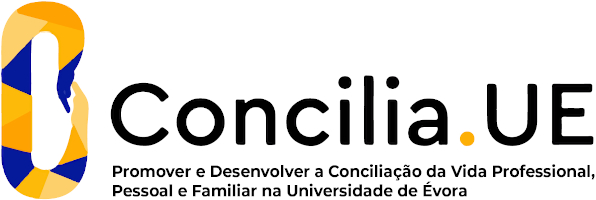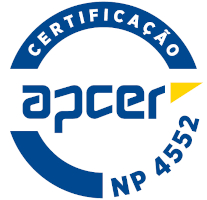2024
Introduction to Probability and Statistics
Name: Introduction to Probability and Statistics
Code: MAT12619L
6 ECTS
Duration: 15 weeks/156 hours
Scientific Area:
Mathematics
Teaching languages: Portuguese
Languages of tutoring support: Portuguese
Regime de Frequência: Presencial
Sustainable Development Goals
Learning Goals
It is intended that the student acquire the fundamental concepts of Probability and Statistics, which are an
indispensable tool for decision in situations of uncertainty, present in Industrial Engineering. In the end, they are
expected to be able to do a preliminary analysis of the data and make inference, such as estimating parameters
(point and interval) and / or making hypothesis tests for the parameters of the Normal distribution: mean value,
variance, and difference of mean values; and also confidence intervals and asymptotic tests for the proportion and
difference of proportions. Finally the simple linear regression model is presented, and students should know how to
adjust the least squares line, make tests and confidence intervals for the parameters and evaluate the quality of
adjustment.
This course unit is intended for students to acquire the ability to:
• individual and team work;
• use statistical software;
• analyze and treat a set of data, having the ability to choose the methods to use
indispensable tool for decision in situations of uncertainty, present in Industrial Engineering. In the end, they are
expected to be able to do a preliminary analysis of the data and make inference, such as estimating parameters
(point and interval) and / or making hypothesis tests for the parameters of the Normal distribution: mean value,
variance, and difference of mean values; and also confidence intervals and asymptotic tests for the proportion and
difference of proportions. Finally the simple linear regression model is presented, and students should know how to
adjust the least squares line, make tests and confidence intervals for the parameters and evaluate the quality of
adjustment.
This course unit is intended for students to acquire the ability to:
• individual and team work;
• use statistical software;
• analyze and treat a set of data, having the ability to choose the methods to use
Contents
Theoretical Component
What is Statistics and its role in scientific work; population, sample. Probability: definitions, axiomatic and properties,
conditional probability, Bayes' theorem; discrete models: uniform in n points, binomial, Poisson, geometric and
hypergeometric; continuous models: uniform, exponential, normal, t-Student, chi-square; discrete random pair;
central limit theorem. Descriptive statistics: graphical representation of data, sample characteristics. Statistical
Inference: estimation by confidence intervals (for mean value, variance and difference of mean values of normal
populations); hypothesis tests: on the mean value in normal populations and with large samples (t-tests); on variance
in normal populations; adjustment; on the mean value based on small samples and on non-normal populations
(Wilcoxon and signal test); for comparison of two populations, based on two independent samples and two paired
samples (t-tests, Mann-Whitney, Wilcoxon's and signs). Simple Linear Regression.
Practical Component
Resolution of exercises involving the theory exposed in the theoretical classes and using the programs, whenever
possible, SPSS or R. These exercises are chosen so as to illustrate the best possible the application of statistics in
the area of Engineering and Industrial Management
What is Statistics and its role in scientific work; population, sample. Probability: definitions, axiomatic and properties,
conditional probability, Bayes' theorem; discrete models: uniform in n points, binomial, Poisson, geometric and
hypergeometric; continuous models: uniform, exponential, normal, t-Student, chi-square; discrete random pair;
central limit theorem. Descriptive statistics: graphical representation of data, sample characteristics. Statistical
Inference: estimation by confidence intervals (for mean value, variance and difference of mean values of normal
populations); hypothesis tests: on the mean value in normal populations and with large samples (t-tests); on variance
in normal populations; adjustment; on the mean value based on small samples and on non-normal populations
(Wilcoxon and signal test); for comparison of two populations, based on two independent samples and two paired
samples (t-tests, Mann-Whitney, Wilcoxon's and signs). Simple Linear Regression.
Practical Component
Resolution of exercises involving the theory exposed in the theoretical classes and using the programs, whenever
possible, SPSS or R. These exercises are chosen so as to illustrate the best possible the application of statistics in
the area of Engineering and Industrial Management
Teaching Methods
The theoretical-practical classes predominantly taught in the framework, with support of e-learning tools and use of
slides. It motivates to go to classes and the continuous work of the student. The sessions include the resolution of
practical exercises and case studies, actively involving students in their resolution or discussion.
The introduction of theoretical concepts using examples of direct application in the area of Engineering and Industrial
Management seeking to show the relevance of the programmatic contents. The exercises are directed, focusing the
resolution of current and real problems, with the aim of developing the taste and interest for the discipline and to
show its usefulness. Focus on the interpretation and analysis of data resorting whenever possible to outputs of the
software used.
Evaluation Methods
Continuous Assessment - exercises solved in practical classes.
Periodic Evaluation - 2 frequencies: mid and at the end of the semester. Only those students who have attended at
least 75% of the laboratory practice classes taught up to this test will be able to carry out the tests. The minimum
grade is 7 points.
Final exam for students not approved in the set Assessment continues.
Resource Exam for students not approved in the final exam and for those who want to make grade improvement.
slides. It motivates to go to classes and the continuous work of the student. The sessions include the resolution of
practical exercises and case studies, actively involving students in their resolution or discussion.
The introduction of theoretical concepts using examples of direct application in the area of Engineering and Industrial
Management seeking to show the relevance of the programmatic contents. The exercises are directed, focusing the
resolution of current and real problems, with the aim of developing the taste and interest for the discipline and to
show its usefulness. Focus on the interpretation and analysis of data resorting whenever possible to outputs of the
software used.
Evaluation Methods
Continuous Assessment - exercises solved in practical classes.
Periodic Evaluation - 2 frequencies: mid and at the end of the semester. Only those students who have attended at
least 75% of the laboratory practice classes taught up to this test will be able to carry out the tests. The minimum
grade is 7 points.
Final exam for students not approved in the set Assessment continues.
Resource Exam for students not approved in the final exam and for those who want to make grade improvement.
Assessment
The grades are within the interval [0,20]. Continuous assessment or by final exam, in accordance with the Academic Regulations of the University of Évora. The continuous assessment regime consists of two tests, with the same weight, with the minimum score, in each one, being 7 points. The final grade is the average of the frequencies. The exam assessment system requires the student to obtain a minimum grade of 9.5 (normal, appeal and special seasons).





















